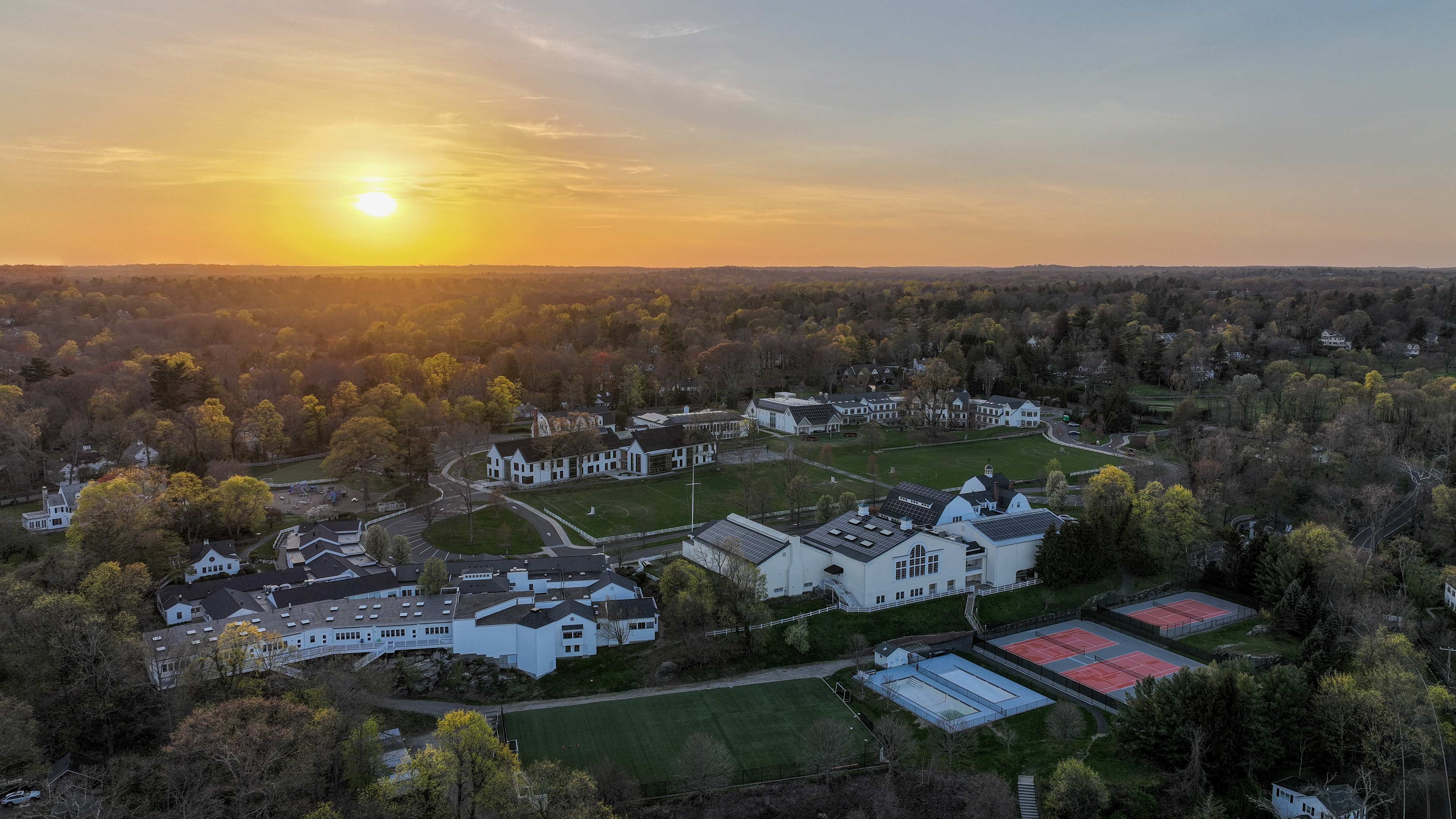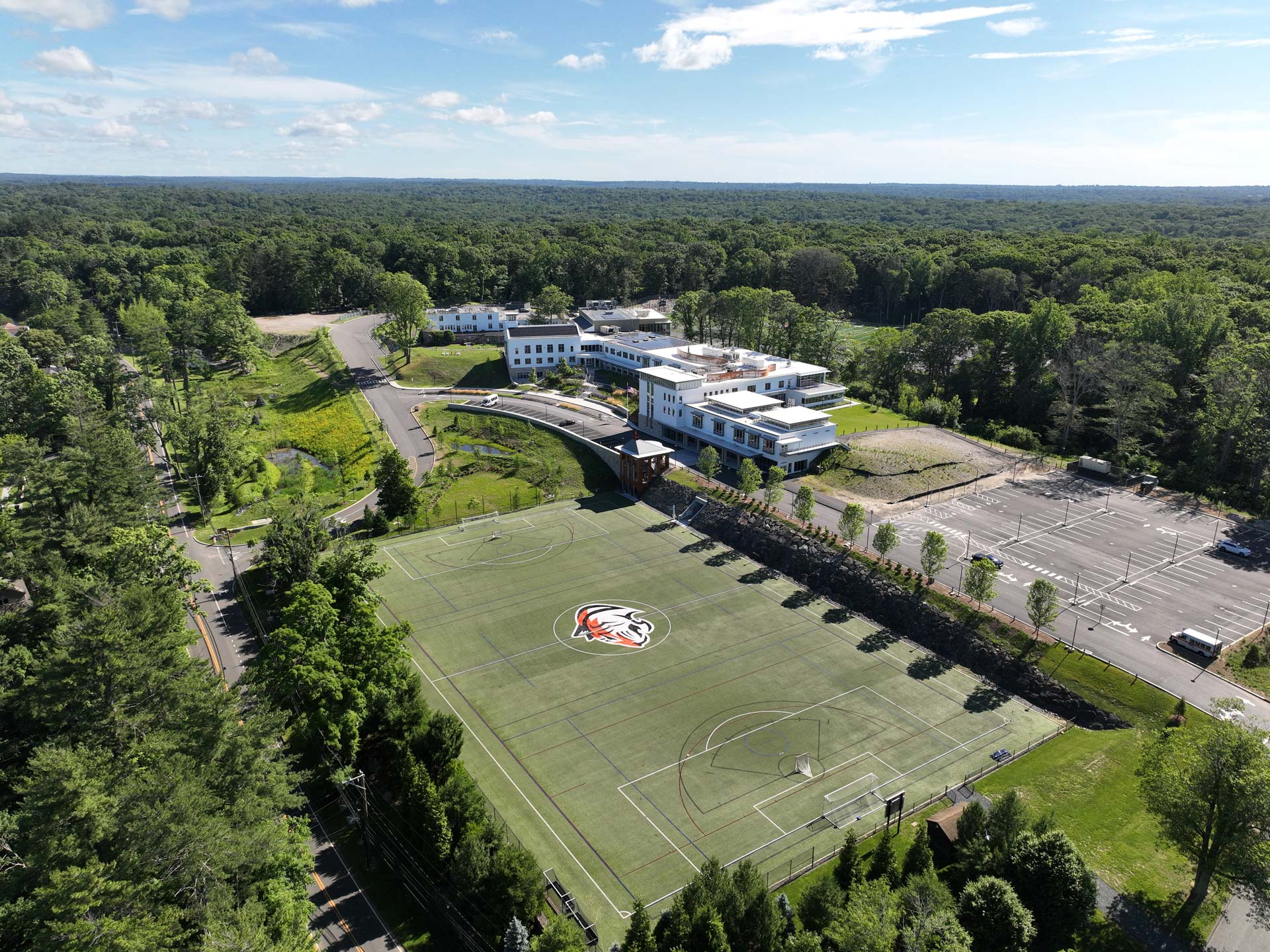
The following are excerpts from the soon-to-be published history book honoring Greenwich Country Day School Centennial.
Introduction
By Douglas Lyons, Former Head of School
100 years is a long stretch—or just a blip in history depending on how you measure time. In the life of a school, the Centennial is a logical event to question whether the school’s founding mission has continuing relevance. That question is simply this: In its present form, does Greenwich Country Day School remain as good as its original promise? Have the significant cultural and technological changes in how people live and think in the 21st century rendered the founding mission obsolete? Does any theory of education survive 100 years?
The original promise of our school took shape in 1925 when three Greenwich mothers sought an education for their boys that would mobilize the natural curiosity of childhood; a school program in which rigor would be defined by active experience. They wanted their sons to be engaged in their own education, captivated by the beauty and mystery of the world around them. They hoped for a learning environment in which students could explore and expand their interests and broaden their worldview. Finally, they wanted their sons to care about learning but also to learn about caring.
The goal was to graduate lifelong learners: curious and resilient adults who would find meaning and purpose all around them. The mothers wanted their sons to be kind; good husbands, fathers, neighbors—role models in answer to the question, “What makes a good life?”
This vision was so clearly at odds with the prevailing pedagogy of the era that the word “revolutionary” seems appropriate. The risk was clear. Would this humble school, housed in Florence Rockefeller’s barn, attract Greenwich parents who were accustomed to a far more traditional and competitive preparation for adulthood for their sons?
In modern terminology, Greenwich Country Day School opened as a start-up. You could say it was launched as an “upstart” start-up. Although the school opened in 1926 with a minimum number of students (a baker’s dozen), these students were the sons of highly respected “community opinion shapers.” Despite fierce criticism from family and friends, the founding parents were steadfast in defending the school’s philosophy and their choice to send their sons to Country Day. Their support would prove to be critical in the early era. A mere three years after the founding, a global economic crisis engulfed the world. Our fledgling school survived.
74 years later, in 1992, as the newly appointed Head of School, I spent Spring Break in Florida where I enjoyed a series of lunches with nine long-retired members of the first graduating class, the Class of 1938. Their poignant memories provided vivid evidence of the school’s lasting impact and the fulfillment of its founding mission. Every conversation about the early years of Country Day centered on the profound influence of the founding Head and the original faculty.
Miner had a simple, compelling belief in the purpose of education in the formative years. He believed that the people who have the best lives are not those who have the most comforts; they are the people who have the most interests. These are adults who are rarely bored or lonely. They have been led to a precious gift; a disposition toward learning as an innately pleasurable act.
Greenwich Country Day School in 2026 sparkles with facilities and technologies that the first faculty could hardly imagine. But they would recognize the culture. For it is true to the original promise. And still revolutionary.
Chapter 2
Optimism amid Depression: GCDS Takes Root (1927–1941)
By Jim Cullen, author of “Greenwich Country Day School: A Centennial History” and Upper School History Teacher
In some respects, Greenwich Country Day School was born at a propitious moment. The late 1920s were generally a prosperous time in the United States, especially in environs like Greenwich, where a rising stock market lifted many boats, and where some very shrewd minds, seeing piles of unsold goods on faraway quays, sensed the tremors of a coming earthquake.
These were years when the fundamental character of the school—its student-centered and family orientation; its emphasis on educating the whole child; its specific traditions like public speaking—were durably established. By this point, the Progressive movement that had dominated American politics in the first two decades of the century had faded; but progressivism as a cultural force was still running strong, particularly in educational circles. Such currents were absorbed, in definite if finite form, at GCDS, and while the school would grow and change with the tenor of the times, this trait, if at times recessive, would remain a durable strand in the school’s DNA for the next century.
A major reason for this was its founding headmaster, John Lynn Miner. Miner—known as “Lynn” to friends—was born in the western New York town of Sherman in 1887, the son of a Protestant minister. He attended Allegheny College in western Pennsylvania, from which he graduated in 1909. After a teaching stint in Istanbul and study at Leipzig, Miner did more graduate work at Columbia before accepting teaching posts at Allen Stevenson School in New York and a headmaster position at the Harvey School in 1916. When, a decade later, the founders of Country Day were looking for its first leader, Miner stood out. Founding mother
Dorothy Baker found him “very unaffected” and “evincing a basic knowledge of what children would start with.” Miner, still in his thirties when he took the job, was everything the founders hoped for and yet nothing like what they expected. He had none of the academic credentials or family pedigree that characterized an era dominated by the imperial head of school. A humble, soft- spoken mentor to faculty and students, Miner was also an avid outdoorsman, a true intellectual (in particular a disciple of John Dewey), and world traveler with a particular interest in the Far East. His vitality was key to the success of GCDS at a formative moment in its life. The essence of Miner’s vision—its unmistakable progressive elements jostling alongside an emphasis on core skills—emerges clearly in a handbook distributed to faculty during his tenure.
Briefly [he writes], the purposes of our teachings are:
1. To teach each boy to solve problems independently.
2. To develop in each boy the ability to express himself as perfectly as is possible and to carefully avoid repression through unfriendly criticism and fear.
3. To have each boy understand so thoroughly the progressive units of each subject that they become part of him like a vivid personal experience and cannot be forgotten because they need not be remembered.
4. To teach each boy a method of work—accuracy of expression, form, correct spelling, and correct sentence structure. No paper is to be accepted which is not neatly written and clearly expressed.
5. To make boys interested in school studies by relating them to their lives, taking their ages, maturity, and interest into account.
6. To encourage, by personal interest, the investigation of manufacturing and business plants and the pursuit of a nature or scientific avocation, and the reading of good books.
The commercially minded emphasis, embedded in a wider intellectual outlook, seems to reflect Miner’s understanding of his constituency (one that remains prominent at the school to this day). The board of trustees gave Miner a free hand in running the institution, even as he deferred to it in fiscal matters. That the school survived financially even as it thrived academically testifies to the efficacy of this division of labor.
To a striking degree, the durable core traditions of a GCDS education took root in these early years. This included a vigorous athletic program that included basketball, boxing, fencing, hockey, and football. Outdoor activities also included sledding, skiing, and building a log cabin. (As with most boys at most schools, Swiss Army knives were as common as pencils and dress ties and were used for activities that ranged from scouting to carving on classroom desks.) When sports were idled by mud season, marbles tournaments were popular; one student remembered, “It was cutthroat. Wall Street moguls might have gotten their early trading experience trading marbles at Country Day.” Halloween was an especially beloved holiday, marked by much merriment. The entire school participated in graduation ceremonies, which included choral singing and short plays by the younger boys.
The vitality of these activities was rooted in faculty participation. Miner hired a cadre of talented and committed teachers, many of whom enjoyed housing on the newly established Old Church Road campus. Faculty served as coaches and lunched with students in the dining hall, fostering strong ties among them.
Afterword
By Adam Rohdie, Head of School
As I write this afterward in late 2024, I am struck by two realities. The first is how much we have accomplished. GCDS opened the 2024-2025 school year (our 99th) with more than 1,450 students enrolled. We will employ well over 400 people. The campus now includes 3 different locations and sits on over 125 acres in Greenwich. Our annual operating budget will be over 90 million dollars and our endowment will sit just north of 100 million. We continue to attract the best and brightest faculty and staff. Our seniors are being accepted into the most highly selective colleges and universities, and we are lucky to receive close to seven applications for every potential opening we have for enrollment. These metrics are cause for celebration and are good reasons for our school to be proud.
The second reality is aspirational. While I am extremely confident in the future of GCDS I never stop thinking about what the future holds. From the moment our founders conceived of a school that offered something broader than was available at the time, we have been a school that honors tradition, and at the same time studies new information on how best to prepare students to thrive in college, career, and in life—continuously challenging ourselves to evolve the teaching and learning experience to ensure our students’ success in the rapidly changing world they will enter.
In my conversations with college presidents and business leaders, they are desperate to find graduates who can work well with others, who can communicate in writing and verbally. They are looking for young people who are self-starters, who are resilient in the face of challenges, and who love learning for the sake of learning itself. This will be our challenge moving forward—we must maintain our North Star and continue to do the extremely hard work of creating a curriculum that has real world applications, that challenges students to their core and at the same time excites them to work harder than they ever have. I relish this challenge.
Books will be available at the start of the school year in September.










.JPG&command_2=resize&height_2=85)





.jpg&command_2=resize&height_2=85)





